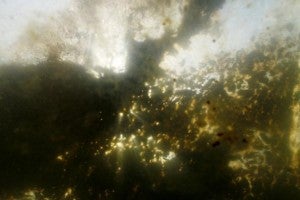“Red Herrings” in the Gulf of Mexico – Part 3: Undersea Plumes?
This is the third post in a four part series discussing the ongoing – and “cascading” – effects in the Gulf, not from “oil,” but rather its toxic components and their impacts on sensitive ecosystems. Read the rest of the series.
 It could well be that the now-notorious subsurface plumes contained –or contain – a mixture of tiny oil droplets (both from oil spewing, hot, under pressure into cold water, and then being dispersed into even smaller droplets courtesy of Corexit) and dissolved or partly dissolved lower-molecular weight materials, like BTEX (benzene, toluene, ethyl benzene and various xylenes).
It could well be that the now-notorious subsurface plumes contained –or contain – a mixture of tiny oil droplets (both from oil spewing, hot, under pressure into cold water, and then being dispersed into even smaller droplets courtesy of Corexit) and dissolved or partly dissolved lower-molecular weight materials, like BTEX (benzene, toluene, ethyl benzene and various xylenes).
Components of these plumes broke down – and are breaking down – not in one felled swoop from oil to not-oil, but through a series of breakdown pathways, while it was transported in various directions as the currents shifted over several months of the active oil disaster. These materials would have been exposed to biological processing by bacteria. Bacterial populations were low initially, but have grown exponentially through time within the plumes as they drifted.
There is no free lunch in the sea: Did bacteria “eat” the oil?
 Many people are sighing in relief that the apparent explosion of mid-water bacteria have processed much of the original oil load of the system. The cascading impacts of that phenomenon – if verified – have yet to be established. Perhaps the “oil,” per se, is largely gone, but the array of produced materials, and their ramifying ecological effects must be fully accounted.
Many people are sighing in relief that the apparent explosion of mid-water bacteria have processed much of the original oil load of the system. The cascading impacts of that phenomenon – if verified – have yet to be established. Perhaps the “oil,” per se, is largely gone, but the array of produced materials, and their ramifying ecological effects must be fully accounted.
Full and final processing of this huge load of oil would both demand oxygen and produce carbon dioxide. While there have been some observations of adequate oxygen presence, there has as yet been no modeling of total oxygen demand and its implications for ocean ecosystems, including some already under oxygen stress. Moreover, the sea is already being subjected to acidification from absorbed carbon dioxide (the final breakdown product where oxygen is adequate from biotic degradation of hydrocarbons).
While an “Andromeda strain” scenario is far-fetched, many questions remain. What are the likely impacts of such massive loads of both oxygen-consuming organic substances and produced carbon dioxide, on oxygen levels and acidity patterns in the depths? What will happen to this large, new and artificial, biomass of bacteria, as they respire and then decompose? How will this major perturbation of mid-water biota cascade through ocean ecosystems? All unanswered questions.










